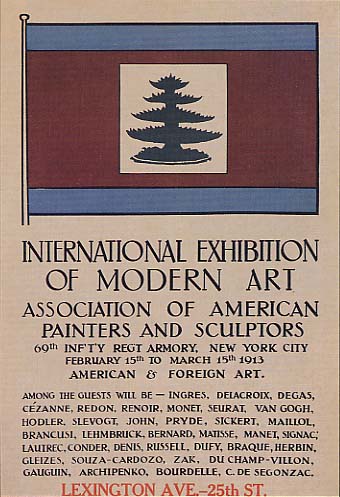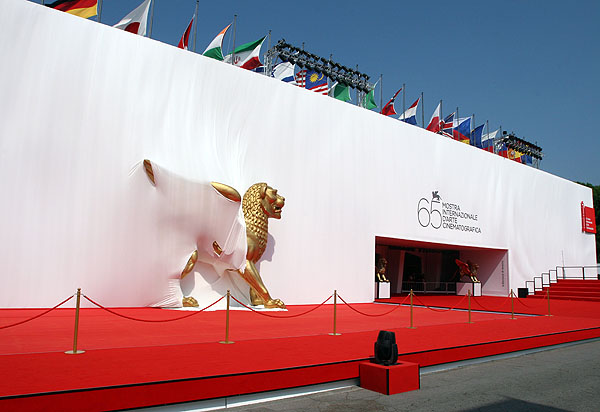|
Chicago No-Jury Society Of Artists
Chicago No-Jury Society of Artists or No-Jury Society was a Chicago artists association known for sponsoring art exhibits where anyone could exhibit art after paying a small fee per artwork. In 1922 the fee was $4.00. The No-Jury Society was founded in 1922 by The founders were Carl Hoeckner, Raymond Jonson and Rudolph Weisenborn. The group was inspired by the 1913 Armory Show in Chicago (the traveling exhibition after New York City exhibition) to bring modern art to exhibition space without the artists submitting to a selection process of the conservative artistic juries of Chicago. The group held the first exhibition at the Marshall Field & Co. department store in downtown Chicago. The group continued to sponsor shows through the 1920s and into the 1930s and 1940s. Some years no show was mounted, and for a time the show was biennale Biennale (), Italian for "biennial" or "every other year", is any event that happens every two years. It is most commonly used within the a ... [...More Info...] [...Related Items...] OR: [Wikipedia] [Google] [Baidu] |
Carl Hoeckner
Carl Hoeckner (1883-1972) is an American artist active in Chicago during the Great Depression. Biography Hoeckner was born in 1883 in Munich, Germany. In 1910 he immigrated to Chicago. His first job in the United states was as an illustrator in the advertising department of Armour and Company, a meatpacking company in Chicago. He went on to work in the advertising department of Marshall Field's department store. Hoeckner was active in the Chicago art scene. He was a member of the Palette and Chisel Club and the American Artists' Congress. He was associated with fellow artists Ramon Shiva, Rudolph Weisenborn, and Beatrice S. Levy. In 1921 he helped organize a showing of about 300 works at the A. M. Rothschild & Company Store. In 1922 he helped found the Chicago No-Jury Society of Artists. In the 1930s he worked for the graphics division for the Works Progress Administration Illinois Art Project. From 1929 to 1943 he taught at the School of the Art Institute of Chicago. Hoe ... [...More Info...] [...Related Items...] OR: [Wikipedia] [Google] [Baidu] |
Raymond Jonson
Raymond Jonson (July 18, 1891 – May 10, 1982), was an American-born Modernist painter known for his paintings of the American Southwest. Born Carl Raymond Johnson, he originally signed his paintings C. Raymond Johnson, but later used Raymond Jonson, dropping the first initial and reverting to a more traditional spelling of his last name. Jonson organized modernist exhibitions at the Museum of New Mexico. He established the Atalaya Art School, teaching art classes, and founded the Transcendental Painting Group in 1938. Raymond Jonson established the Jonson Gallery at the University of New Mexico in 1950. The gallery later moved to the University of New Mexico Art Museum. Biography C. Raymond Johnson was born in Chariton, Iowa in 1891, one of six children of Reverend Gustav Johnson and Josephine Abrahamson Johnson. The family moved to Portland, Oregon in 1902, where he attended Lincoln High School and the Museum Art School."Raymond Johnson ic Artist, Is Recipient of Hi ... [...More Info...] [...Related Items...] OR: [Wikipedia] [Google] [Baidu] |
Rudolph Weisenborn
Rudolph Weisenborn (1881-1974) was an American artist. He painted murals for the Works Progress Administration (WPA) and was a founding member of the American Abstract Artists (AAA). Biography Weisenborn was born in 1881 in Chicago, Illinois. He attended art school in Denver, Colorado where his teachers included Jean Mannheim. In 1913 he returned to Chicago. In 1922 he married Alfreda Gordon (1900-1968). Weisenborn was active in the Chicago art scene. He was a member of several art groups including the Palette and Chisel Club, the American Artists' Congress, the Cor Ardens, the Chicago No-Jury Society of Artists, and the Chicago Society of Artists. Weisenborn taught at the Chicago Academy of Fine Arts from 1922 through 1934. He then taught privately until 1964. In the 1930s Weisenborn produced several murals for the Works Progress Administration (WPA); a 7' X 30' mural entitled ''Contemporary Chicago'' at the Nettlehorst Elementary School in Chicago, and a series of murals ... [...More Info...] [...Related Items...] OR: [Wikipedia] [Google] [Baidu] |
Armory Show
The 1913 Armory Show, also known as the International Exhibition of Modern Art, was a show organized by the Association of American Painters and Sculptors in 1913. It was the first large exhibition of modern art in America, as well as one of the many exhibitions that have been held in the vast spaces of U.S. National Guard armories. The three-city exhibition started in New York City's 69th Regiment Armory, on Lexington Avenue between 25th and 26th Streets, from February 17 until March 15, 1913. The exhibition went on to the Art Institute of Chicago and then to The Copley Society of Art in Boston,International Exhibition of Modern Art catalogue cover, Copley Society of Boston, |
Marshall Field & Co
Marshall may refer to: Places Australia * Marshall, Victoria, a suburb of Geelong, Victoria Canada * Marshall, Saskatchewan * The Marshall, a mountain in British Columbia Liberia * Marshall, Liberia Marshall Islands * Marshall Islands, an island nation in the Pacific Ocean United States of America * Marshall, Alaska * Marshall, Arkansas * Marshall, California * Lotus, California, former name Marshall * Marshall Pass, a mountain pass in Colorado * Marshall, Illinois * Marshall, Indiana * Marshall, Michigan * Marshall, Minnesota * Marshall, Missouri * Marshall, New York * Marshall, North Carolina * Marshall, North Dakota * Marshall, Oklahoma * Marshall, Texas, the largest U.S. city named Marshall * Marshall, Virginia * Marshall, Wisconsin (other) ** Marshall, Dane County, Wisconsin ** Marshall, Richland County, Wisconsin ** Marshall, Rusk County, Wisconsin Businesses * Marshall of Cambridge, a British holding company encompassing aerospace, fleet management, ... [...More Info...] [...Related Items...] OR: [Wikipedia] [Google] [Baidu] |
Biennale
Biennale (), Italian for "biennial" or "every other year", is any event that happens every two years. It is most commonly used within the art world to describe large-scale international contemporary art exhibitions. As such the term was popularised by Venice Biennale, which was first held in 1895. Since the 1990s, the terms "biennale" and "biennial" have been interchangeably used in a more generic way - to signify a large-scale international survey show of contemporary art that recurs at regular intervals but not necessarily biannual (such as triennials, Documenta, Skulptur Projekte Münster). The phrase has also been used for other artistic events, such as the "Biennale de Paris", "Kochi-Muziris Biennale", Berlinale (for the Berlin International Film Festival) and Viennale (for Vienna's international film festival). Characteristics According to author Federica Martini, what is at stake in contemporary biennales is the diplomatic/international relations potential as well as ur ... [...More Info...] [...Related Items...] OR: [Wikipedia] [Google] [Baidu] |
Arts Organizations Based In Illinois
The arts are a very wide range of human practices of creative expression, storytelling and cultural participation. They encompass multiple diverse and plural modes of thinking, doing and being, in an extremely broad range of media. Both highly dynamic and a characteristically constant feature of human life, they have developed into innovative, stylized and sometimes intricate forms. This is often achieved through sustained and deliberate study, training and/or theorizing within a particular tradition, across generations and even between civilizations. The arts are a vehicle through which human beings cultivate distinct social, cultural and individual identities, while transmitting values, impressions, judgments, ideas, visions, spiritual meanings, patterns of life and experiences across time and space. Prominent examples of the arts include: * visual arts (including architecture, ceramics, drawing, filmmaking, painting, photography, and sculpting), * literary arts (includin ... [...More Info...] [...Related Items...] OR: [Wikipedia] [Google] [Baidu] |
American Artist Groups And Collectives
American(s) may refer to: * American, something of, from, or related to the United States of America, commonly known as the "United States" or "America" ** Americans, citizens and nationals of the United States of America ** American ancestry, people who self-identify their ancestry as "American" ** American English, the set of varieties of the English language native to the United States ** Native Americans in the United States, indigenous peoples of the United States * American, something of, from, or related to the Americas, also known as "America" ** Indigenous peoples of the Americas * American (word), for analysis and history of the meanings in various contexts Organizations * American Airlines, U.S.-based airline headquartered in Fort Worth, Texas * American Athletic Conference, an American college athletic conference * American Recordings (record label), a record label previously known as Def American * American University, in Washington, D.C. Sports teams Soccer * ... [...More Info...] [...Related Items...] OR: [Wikipedia] [Google] [Baidu] |
Non-profit Organizations Based In Chicago
A nonprofit organization (NPO) or non-profit organisation, also known as a non-business entity, not-for-profit organization, or nonprofit institution, is a legal entity organized and operated for a collective, public or social benefit, in contrast with an entity that operates as a business aiming to generate a profit for its owners. A nonprofit is subject to the non-distribution constraint: any revenues that exceed expenses must be committed to the organization's purpose, not taken by private parties. An array of organizations are nonprofit, including some political organizations, schools, business associations, churches, social clubs, and consumer cooperatives. Nonprofit entities may seek approval from governments to be tax-exempt, and some may also qualify to receive tax-deductible contributions, but an entity may incorporate as a nonprofit entity without securing tax-exempt status. Key aspects of nonprofits are accountability, trustworthiness, honesty, and openness to eve ... [...More Info...] [...Related Items...] OR: [Wikipedia] [Google] [Baidu] |
Arts Organizations Established In 1922
The arts are a very wide range of human practices of creative expression, storytelling and cultural participation. They encompass multiple diverse and plural modes of thinking, doing and being, in an extremely broad range of media. Both highly dynamic and a characteristically constant feature of human life, they have developed into innovative, stylized and sometimes intricate forms. This is often achieved through sustained and deliberate study, training and/or theorizing within a particular tradition, across generations and even between civilizations. The arts are a vehicle through which human beings cultivate distinct social, cultural and individual identities, while transmitting values, impressions, judgments, ideas, visions, spiritual meanings, patterns of life and experiences across time and space. Prominent examples of the arts include: * visual arts (including architecture, ceramics, drawing, filmmaking, painting, photography, and sculpting), * literary arts (incl ... [...More Info...] [...Related Items...] OR: [Wikipedia] [Google] [Baidu] |




